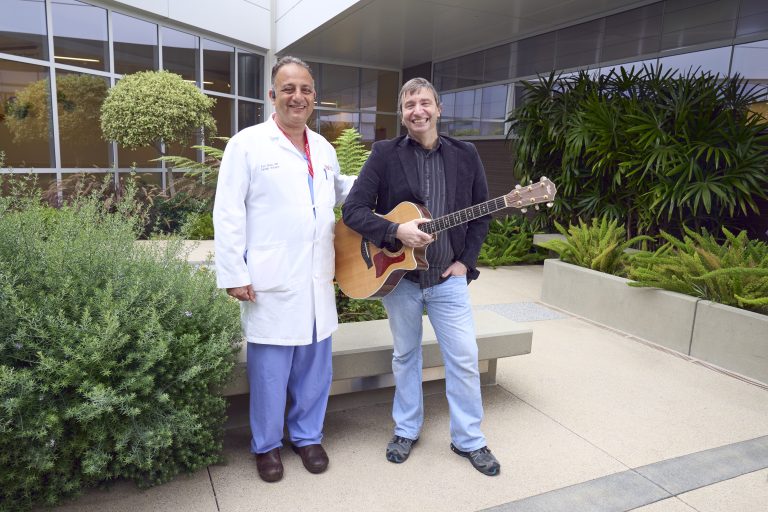Over the last few years, Cedars-Sinai Health System leaders have come together to foster high-quality care across the system’s hospitals, medical networks and other entities. This Quality Collaborative is built on an overarching principle that prioritizes excellent quality across the health system while recognizing that transformational, sustainable change depends on expertise at the local level.
This strategy is a departure from traditional top-down, one-size-fits-all approaches often pursued by health systems seeking to improve quality and safety.
Transparency and trust among partners and honest measurement of results are keys to success for everyone involved, including leadership at Cedars-Sinai Medical Center, Torrance Memorial Medical Center, Huntington Health, Cedars-Sinai Marina del Rey Hospital and Providence Cedars-Sinai Tarzana Medical Center.
Here, Quality Collaborative leaders share details about the effort, lessons learned, and how the work will continue to evolve and benefit patients.
Explain the rationale behind the health system’s culture and philosophy for improving healthcare quality.
Joyelle Sudbury, Chief Quality Officer and Vice President, Quality, Cedars-Sinai:
We saw the limitations of a one-size-fits-all approach with other models and came to consensus early on about our fundamental philosophy and approach, which is rooted in the belief that sustained quality and safety excellence must be prioritized, led, owned and driven locally. Strong programs that continue to mature and evolve benefit the broader system through sharing of lessons and insights that can be potentially adapted and applied to other local ecosystems.
Nirav Kamdar, MD, Vice President, Quality Improvement, Patient Safety and Clinical Operations, Huntington Health:
While we’re operating from a systemwide philosophy with agreed-upon quality and safety principles that connect us all, we’re valuing our diverse differences in local solutions to drive the work. We aren’t being prescriptive in what every site should do in their own quality improvement efforts, and we are continually evolving as we learn and grow together. I’ll make the analogy to evolution, in which the pace is predicated on the plurality of different traits intermixing. It’s the same concept here: The more diversity in approach at the local level, the faster you can learn, share and converge onto more innovative solutions.
Heather Shay, RN, Vice President, Quality, Torrance Memorial:
Our affiliation brings together organizations and ensures that they are successful in achieving common, agreed-upon performance metrics while succeeding in their local goals and objectives and ensuring that they each maintain strong connections to their communities. We leverage our differences and the great work being done locally to learn from each other and, where appropriate, align efforts and priorities. We are all different, but those differences bring great value to the group.
Can you provide examples of local quality improvement efforts that have resulted from this approach?
Kamdar: One example from Huntington is our sepsis mortality work. When we started the work, our compliance percentage was slightly below the national average at 49%. When we chose an Emergency Department-centric approach, it increased to 83% within seven months, and now it’s up to 88%—within the top 10% average nationally. The sepsis coordinators from respective programs are now meeting to share successes and challenges. That’s the beauty of collaboration—we get to see differences in approaches, and because we’re all one system, we can go to each other’s campuses and check them out.
Shay: One example to mention at Torrance Memorial is when, early on, we were working on improvements in catheter-associated urinary tract infections. We successfully put into practice lab methodologies that Cedars-Sinai used to improve their results in that area. Another example is with public reporting. We’ve been able to share with other health system partners how we’ve moved the needle with our rankings and what we’ve learned over the long journey that they’re now embarking on.
Sudbury: I’ll add that in working together to align our philosophical approach to annual quality and safety goal development, we established a common language that enables us to share and discuss our prioritized quality and safety efforts using the term “GMT,” which stands for Goals, Metrics and Targets. This shared nomenclature has enabled further collaboration as we take on similar but unique hospital challenges such as sepsis, infection prevention and even hospital flow.
How are we tracking and measuring quality across the health system?
Sudbury: We have dashboards that enable us to track and measure quality. Examples of two reports we update and utilize in assessing overall system quality include our Medicare quality metric dashboard and a quarterly report that tracks individual hospital progress toward local, annual quality goals.
Kamdar: Dashboards are remarkably powerful tools, providing insight into performance as well as allowing our teams to identify best practices. Some might view dashboards as a means of encouraging friendly competition. To me, it’s really about collaboration and shared learnings. If one provider (or group of providers) achieves a measure of excellence, we want to hold that practice up for others to learn from and emulate. It’s a healthy form of accountability. And, with the arrival of our new senior vice president and chief clinical officer, Dr. John Corman, who brings quality oversight expertise and a focus on strong collaboration, we know that our medical staff will appreciate greater visibility into these dashboards, too.
Shay: More recently, we’ve begun to compare how the entities within Cedars-Sinai Health System cumulatively compare to other healthcare systems—and we’ve found that we compare very well. It’s taken time to get there. We first had to learn about each other—and come up with our own methodology for comparing things at a system level—before we could compare ourselves to other external systems.
What impacts have we seen from this collaborative approach?
Shay: One example is that Cedars-Sinai brought best-in-class mortality scores into the affiliation, which was a priority for us at Torrance Memorial. We met with their Patient Safety leadership team and Quality team to understand the systems and processes they used to improve mortality scores. Some of our initial structure for mortality reviews was built in collaboration with what we learned from Cedars-Sinai, and we continue to see our scores improve.
Sudbury: As hospitals, we’re all struggling with similar challenges. Over the last 18 months, we’ve held sessions to share insights and best practices focused on hospital-acquired pressure ulcers, length of stay, sepsis and hypoglycemia. Additionally, we have regular recurring meetings with the Patient Safety and Infection Prevention leaders to focus on successes and challenges in those areas.
Kamdar: Sharing high-risk safety issues that may need to be addressed at the system level brings greater visibility to a problem and can give it more momentum to solve. At Huntington, new defibrillators were being reported as potentially having an engineering problem. We alerted the other campuses, and now we’re holding a special session with Bioengineering and others across all campuses to further assess and determine next steps.
What lessons have we learned, and how are those learnings being shared—and implemented—across the health system?
Sudbury: The patient populations we serve are unique, the medical staffs are different and the governance structures vary. Despite these differences, we share the common goal of providing the best possible care to our patients, and we strive to drive a culture of quality that is focused on performance excellence. This collaboration across the health system has provided a strategic approach to problem-solving, making each other better and contributing to system synergy.
Shay: We’ve learned that we can always push ourselves to think about areas of further improvement, and that if there’s something one hospital has prioritized already, there are years of knowledge and gained insights that are available to us. Also, there’s a lesson in being respectful and transparent and nurturing our relationships across the system—that’s a big key to success. We’ve got a strong team, and it feels like a family.
Kamdar: There’s a lesson in valuing the diversity of approaches. And in coming together, learning together, sharing together, seeing how others have implemented something and then taking learnings to help each other out, you may find a nugget of discovery you can bring back to your home institution, as well as the collaborative, in the future









